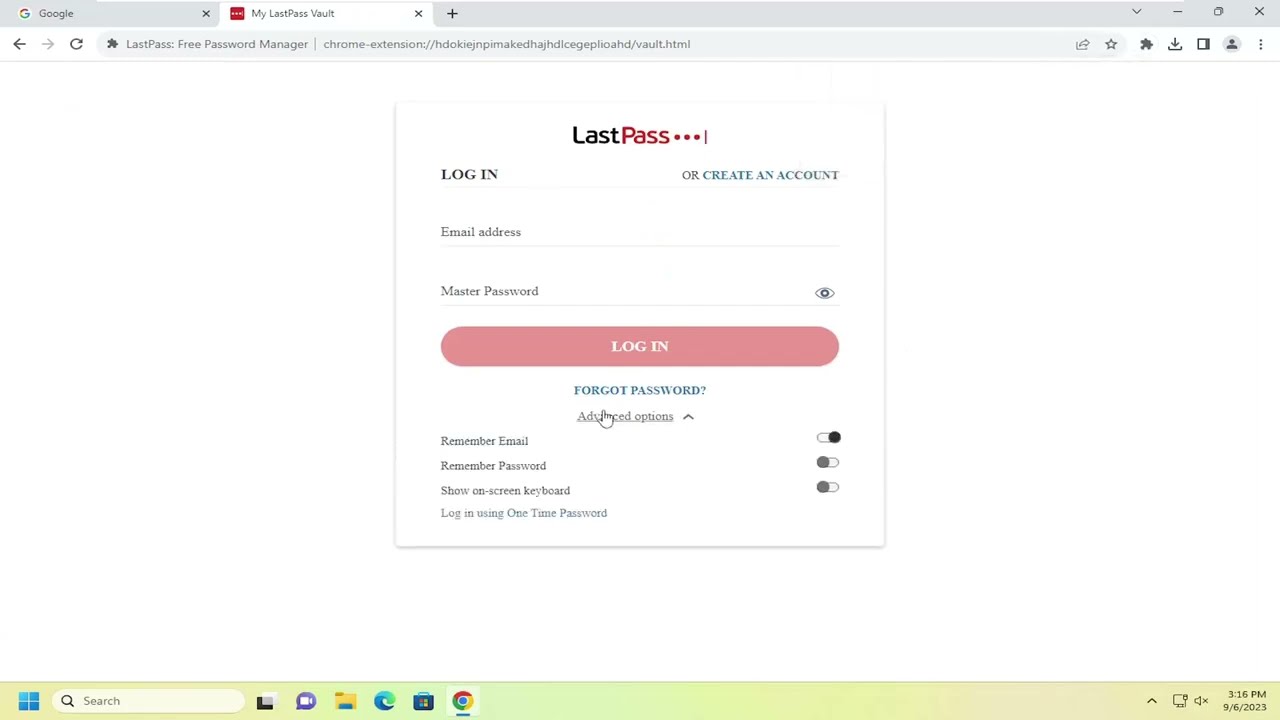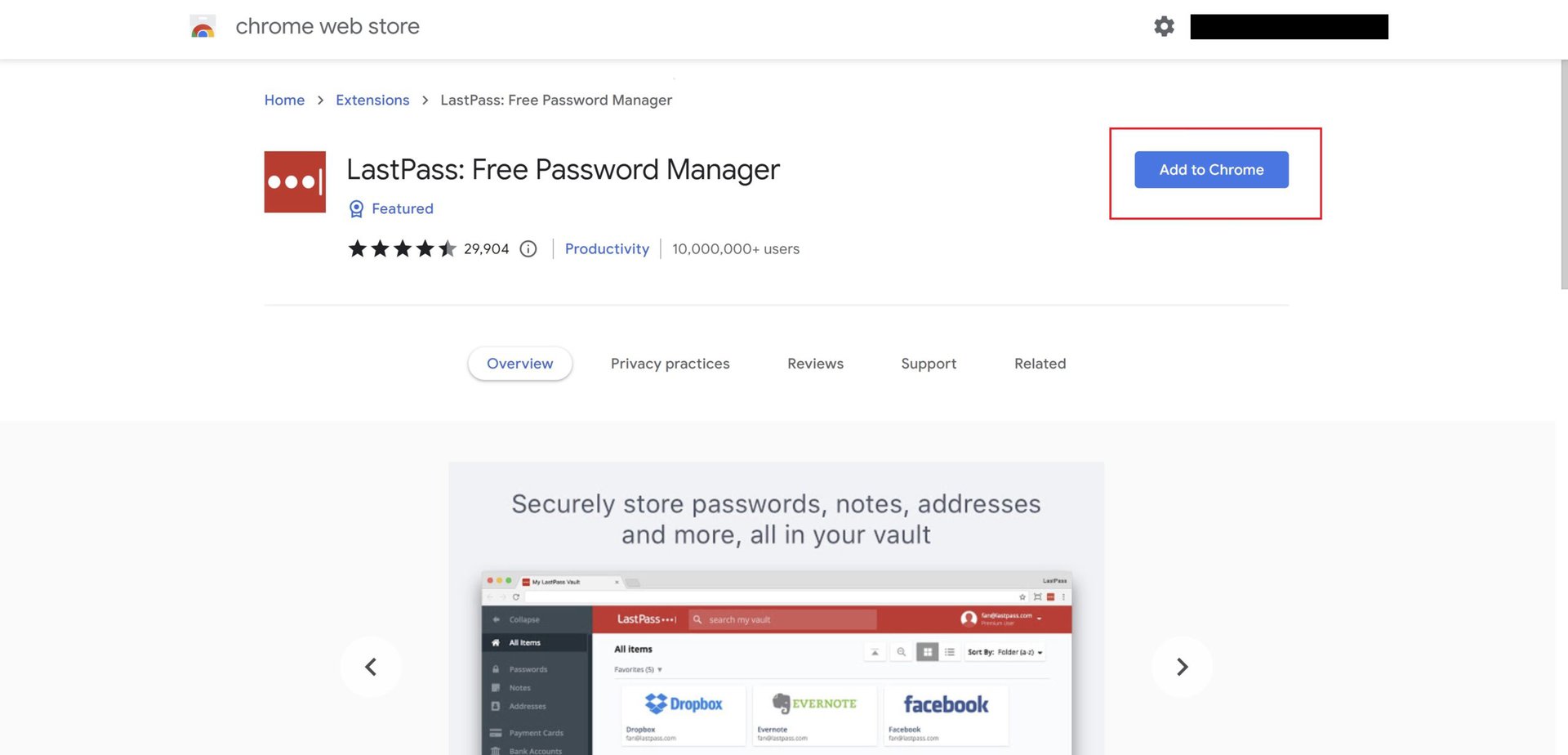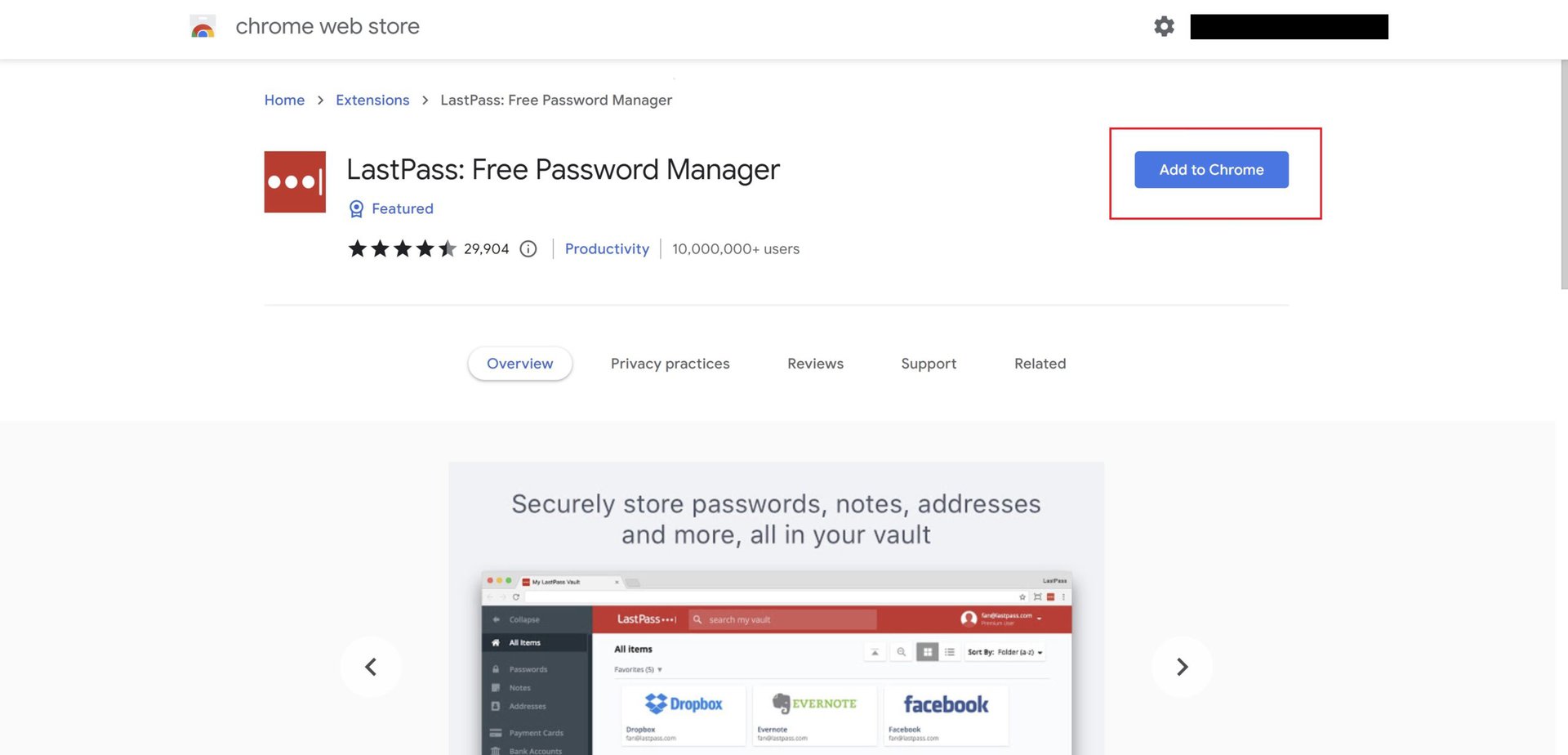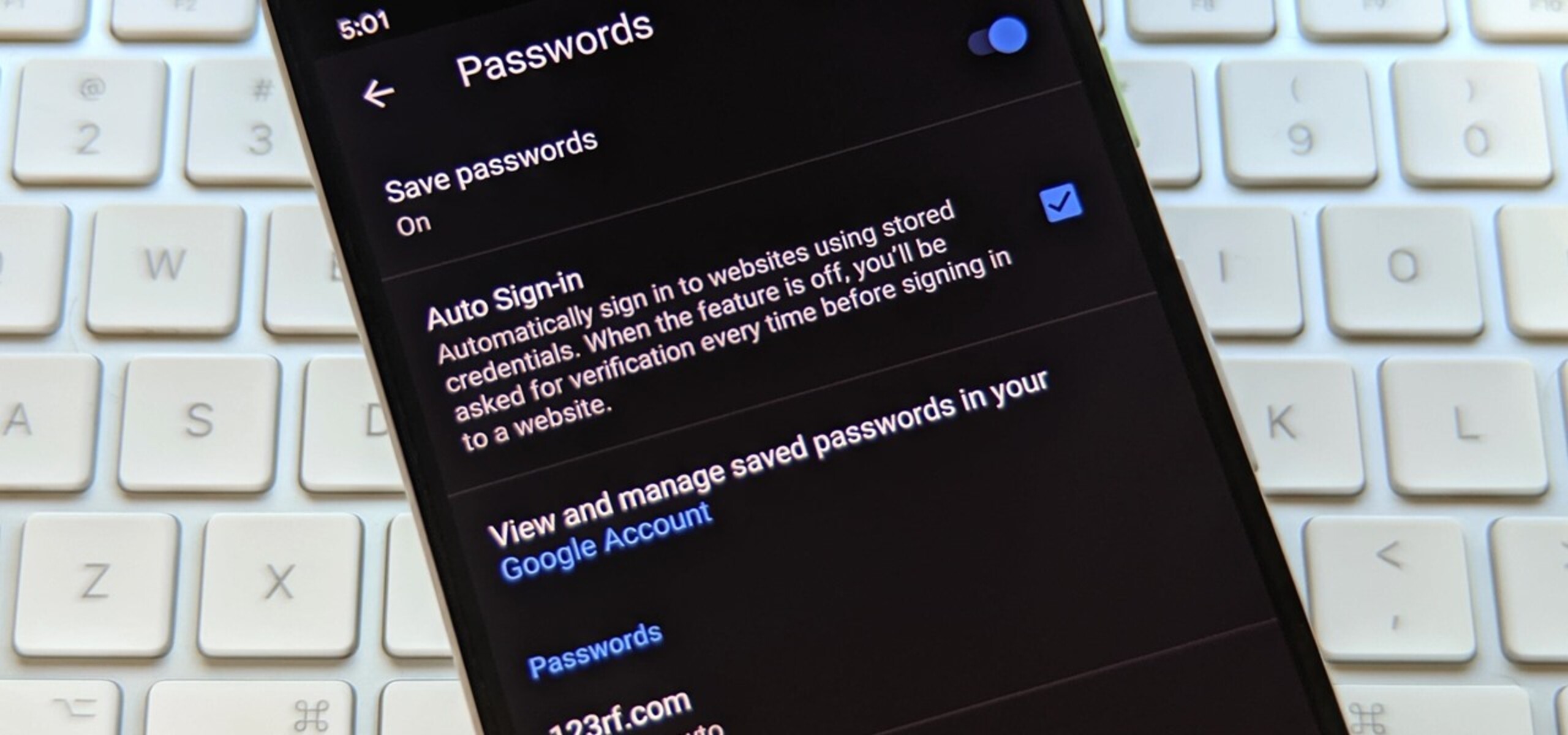Introduction
Adding a password to Chrome can be a convenient way to manage your online accounts and streamline your browsing experience. By saving your login credentials within the browser, you can easily access your favorite websites without the hassle of repeatedly entering your username and password. This not only saves time but also provides a secure and efficient method for managing your online accounts.
In this article, we will walk you through the simple process of adding a password to Chrome. Whether you're a seasoned Chrome user or just getting started with the browser, this step-by-step guide will help you effortlessly store your login information for quick and easy access to your favorite websites.
By following these instructions, you'll be able to securely store your passwords within Chrome's built-in password manager, ensuring that your sensitive information is readily available when you need it. With just a few clicks, you can enhance your browsing experience and minimize the need to remember multiple login credentials.
So, let's dive in and explore the straightforward steps to add a password to Chrome. Whether it's for your social media accounts, email, or any other online platform, Chrome's password management feature can simplify your online interactions and provide a seamless browsing experience. Let's get started!
Step 1: Open Chrome and go to Settings
To begin the process of adding a password to Chrome, you'll first need to open the Chrome browser on your computer or mobile device. Once Chrome is launched, look for the three-dot menu icon located in the top-right corner of the browser window. This icon serves as the gateway to accessing Chrome's settings and various customization options.
Upon clicking the three-dot menu icon, a dropdown menu will appear, presenting a range of choices for customizing your browsing experience. From this menu, select the "Settings" option, which will redirect you to the Chrome settings page. Alternatively, you can directly access the settings page by typing "chrome://settings/" into the address bar and pressing Enter.
Upon reaching the settings page, you will encounter a plethora of configuration options, allowing you to personalize your browsing environment to suit your preferences. The settings page is designed to be user-friendly, with intuitive navigation and clear categorization of features and preferences.
Here, you can explore and modify various aspects of Chrome, including appearance, search engine preferences, privacy and security settings, and much more. It's worth taking the time to familiarize yourself with the settings page, as it offers a wealth of customization options to enhance your browsing experience.
By following these simple steps, you can easily access the settings page in Chrome, setting the stage for the subsequent steps in adding a password to the browser. With the settings page at your fingertips, you're ready to proceed to the next phase of the process, which involves navigating to the "Passwords" section to manage your saved login credentials.
Opening Chrome and accessing the settings page is the foundational step that sets the stage for managing various aspects of your browsing experience. Whether you're a casual user or a seasoned Chrome enthusiast, the settings page serves as a central hub for customizing and fine-tuning your browsing environment to align with your preferences and needs.
Step 2: Click on "Passwords"
After accessing the settings page in Chrome, the next crucial step in adding a password to the browser involves navigating to the "Passwords" section. This section is where you can manage and view the saved login credentials for various websites, providing a centralized location for convenient password management.
To locate the "Passwords" section, you can simply scroll down the settings page until you find the "Autofill" section. Within this section, you will see the "Passwords" option, which you can click to access the dedicated password management interface.
Upon clicking on "Passwords," you will be presented with a list of websites for which Chrome has saved your login information. This list serves as a comprehensive repository of your saved passwords, allowing you to easily review and manage the credentials associated with different websites.
In addition to displaying the saved websites and their corresponding usernames, the "Passwords" section also provides options for editing, removing, and exporting saved passwords. This level of control empowers you to efficiently manage your login credentials, ensuring that your password manager remains organized and up to date.
Furthermore, Chrome offers the option to generate secure passwords for new accounts, which can be automatically saved to the password manager for future use. This feature is particularly valuable for enhancing online security, as it encourages the use of strong, unique passwords for each website, thereby reducing the risk of unauthorized access to your accounts.
By clicking on "Passwords" within the Chrome settings, you gain access to a robust password management interface that simplifies the process of overseeing and maintaining your saved login credentials. This centralized approach to password management streamlines the handling of your online accounts, offering a seamless and secure method for accessing and organizing your passwords.
In summary, clicking on "Passwords" within the Chrome settings provides a gateway to a comprehensive password management interface, enabling you to review, edit, and organize your saved login credentials with ease. This pivotal step sets the stage for adding a new password to Chrome, as it grants you access to the tools and features necessary for efficient password management within the browser.
Step 3: Click on "Add"
Upon accessing the "Passwords" section within the Chrome settings, the next pivotal step in adding a password to Chrome involves clicking on the "Add" button. This action initiates the process of securely storing a new set of login credentials within Chrome's password manager, enabling convenient access to the associated website without the need to repeatedly enter the username and password.
When you click on "Add," a new window or dialog box will appear, prompting you to input the relevant details for the website for which you wish to save the login credentials. This intuitive interface is designed to facilitate the seamless addition of new passwords, ensuring that the process is straightforward and user-friendly.
Within the "Add password" interface, you will typically encounter fields where you can enter the website's URL, your username or email address associated with the account, and the corresponding password. These fields are essential for accurately capturing and storing the login information, allowing Chrome to automatically populate the credentials when you visit the website in the future.
It's important to ensure the accuracy of the entered details, as any inaccuracies may result in difficulty accessing the website using the saved credentials. Additionally, Chrome may offer the option to generate a strong, randomized password for the website, further enhancing the security of your online accounts.
By clicking on "Add" and providing the necessary information, you are effectively instructing Chrome to securely store the login credentials for the specified website. This streamlined process eliminates the need to manually enter the username and password each time you visit the website, saving time and simplifying your online interactions.
Furthermore, Chrome's password manager employs robust encryption and security measures to safeguard your saved login credentials, ensuring that your sensitive information remains protected from unauthorized access. This commitment to security underscores Chrome's dedication to providing a secure and reliable platform for managing your online accounts.
In summary, clicking on "Add" within the "Passwords" section of Chrome's settings initiates the seamless process of adding a new password to the browser's password manager. By inputting the relevant website, username, and password, you can effortlessly store your login credentials, enhancing convenience and security in your online interactions. This straightforward approach to password management exemplifies Chrome's commitment to delivering a user-friendly and secure browsing experience.
Step 4: Enter website, username, and password
When you click on "Add" within the "Passwords" section of Chrome's settings, a new window or dialog box will prompt you to enter the relevant details for the website for which you wish to save the login credentials. This step is crucial in securely storing the login information within Chrome's password manager, ensuring seamless access to the associated website without the need to repeatedly enter the username and password.
The interface for adding a new password is designed to be intuitive and user-friendly, guiding you through the process with clear and straightforward input fields. The first essential detail to provide is the website's URL, which serves as the unique identifier for the online platform where you wish to store the login credentials. By accurately entering the website's URL, you ensure that Chrome associates the saved credentials with the correct online destination, enabling seamless autofill functionality when you visit the website in the future.
Next, you will encounter a field for entering your username or email address associated with the account for the specified website. This information is pivotal in ensuring that Chrome accurately populates the login credentials when you access the website, eliminating the need for manual input and streamlining your browsing experience. By inputting the correct username or email address, you enable Chrome to seamlessly authenticate your identity when accessing the website, enhancing convenience and efficiency in your online interactions.
The final essential detail to provide is the password associated with the specified website. This field is where you securely input the login credentials that grant you access to the online platform. It's important to ensure the accuracy of the entered password, as any discrepancies may hinder the seamless autofill functionality provided by Chrome's password manager. Additionally, Chrome may offer the option to generate a strong, randomized password for the website, further bolstering the security of your online accounts and minimizing the risk of unauthorized access.
By meticulously entering the website's URL, username or email address, and password, you effectively instruct Chrome to securely store the login credentials for the specified website. This streamlined process eliminates the need to repeatedly enter the username and password, providing a seamless and efficient method for accessing your online accounts. Furthermore, Chrome's robust encryption and security measures ensure that your saved login credentials remain protected, underscoring the browser's commitment to safeguarding your sensitive information from unauthorized access.
In summary, the process of entering the website, username, and password within Chrome's password manager interface exemplifies the browser's dedication to delivering a user-friendly and secure browsing experience. By accurately inputting the relevant details, you can effortlessly store your login credentials, enhancing convenience and security in your online interactions.
Step 5: Save the password
After entering the website, username, and password within Chrome's password manager interface, the final step in adding a password to the browser involves saving the entered credentials. This pivotal action ensures that the login information is securely stored within Chrome's password manager, ready to be seamlessly autofilled when you visit the associated website.
Upon inputting the necessary details, you will typically encounter a "Save" or "Save password" button within the password manager interface. Clicking on this button effectively instructs Chrome to securely store the entered login credentials, associating them with the specified website for future access.
By clicking "Save," you are confirming your intent to retain the entered website, username, and password within Chrome's password manager, streamlining your online interactions and enhancing the convenience of accessing your favorite websites. This seamless process eliminates the need to repeatedly enter login credentials, saving time and simplifying your browsing experience.
Furthermore, Chrome's password manager employs robust encryption and security measures to safeguard your saved login credentials, ensuring that your sensitive information remains protected from unauthorized access. This commitment to security underscores Chrome's dedication to providing a secure and reliable platform for managing your online accounts.
Once the password is saved, you can rest assured that Chrome will automatically populate the login credentials when you visit the associated website, seamlessly authenticating your identity and granting you access with just a few clicks. This streamlined approach to password management exemplifies Chrome's user-centric design, prioritizing convenience and security in the browsing experience.
In summary, saving the password within Chrome's password manager marks the culmination of the process of adding a new password to the browser. By securely storing the entered login credentials and enabling seamless autofill functionality, Chrome empowers users to effortlessly access their online accounts while maintaining a strong emphasis on security and user convenience.

























